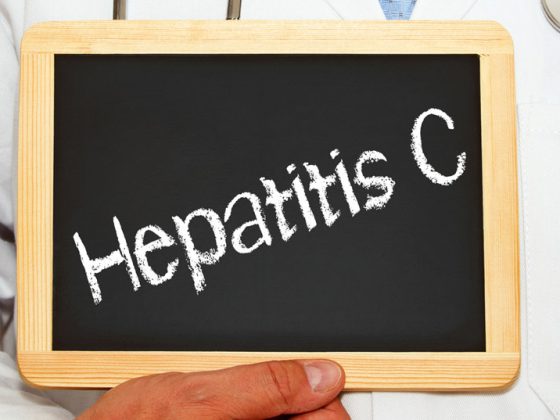Atopic dermatitis continues to present a therapeutic challenge. Several presentations at the EADV congress therefore addressed this topic in more detail: When is a switch from topical to systemic treatment indicated and which agents have been proven to bring about an improvement? To what extent does compliance play a role and what can be done about the agonizing pruritus? Lastly, the therapeutic mechanisms of phototherapy were discussed.
Prof. Jan D. Bos, MD, Amsterdam, gave an overview of current therapeutic options in his presentation. “The treatment of atopic dermatitis depends on the age of the patient and the severity of the disease. Of course, the treatment plan includes an accurate prior diagnosis and comprehensive information to the affected person or parents.” Diagnosis includes the detection of allergen-specific IgE to substantiate the genetic background of atopy. If one does not yet have this evidence, education about potentially atopy-associated comorbidities such as allergic rhinoconjunctivitis, asthma, or food allergy is not appropriate.
Since many patients with atopic dermatitis have dry skin, emollients should be used as a basic therapy. Next, topical glucocorticoids (with ascending potency) or, alternatively, the calcineurin inhibitors pimecrolimus or tacrolimus are used. For severe pruritus, oral antihistamines should be considered. “The problem here is that in most cases only sedative antihistamines show an effect,” Prof. Bos said.
In patients with very severe forms of atopic dermatitis who do not respond to these measures, systemic therapy is an option. Likewise, phototherapy, especially with UV-B, can lead to improvement.
Refractory or lack of compliance?
“Whether the disease is really refractory or just compliance is not working is sometimes difficult to determine,” said Prof. Dusan Buchvald, MD, Bratislava. Adherence fundamentally influences the success of treatment in any case – topical approaches in particular often fail at this hurdle. One should consequently keep potential nonadherence in mind before switching to systemic therapy. A review of published and own data by Prof. Bcuhvald shows: Adherence in atopic dermatitis remains unsatisfactory for both topical and systemic treatments, with negative economic consequences. The correct implementation of the treatment plan depends not only on patient-associated factors, but also on the individual therapy setting and correct information work of the physician.
Even with good compliance under topical approaches, many patients with moderate to severe forms require systemic immunomodulatory treatment for adequate control of disease activity. In a literature review presented at the congress and published in parallel, researchers therefore investigated the efficacy and safety of twelve such therapies [1]. 34 randomized controlled trials (1653 patients) were included in the analysis. Only one therapy showed robust data, namely the use of ciclosporin A, which according to consistent data from 14 studies improved clinical signs of atopic dermatitis – it can therefore be recommended for short-term first-line use.
One option in the second-line setting is azathioprine. However, its efficacy and evidence are lower than for ciclosporin. Methotrexate is mentioned as a third choice in the study. No conclusion could be drawn for mycophenolate, montelukast, intravenous immunoglobulins, and systemic glucocorticoids because of limited evidence. According to the authors, large head-to-head comparisons that reliably test efficacy and safety of long-term treatment are lacking.
Pruritus as a challenge
One of the most disturbing and difficult to treat symptoms is pruritus, which occurs predominantly in the evening and at night. According to Prof. Dr. med. Jacek Szepietowski, Wroclaw, Poland, pruritus presents itself daily in one third of patients and often disturbs sleep. Pruritus intensity showed a positive correlation with age and disease duration. “Itch plays a crucial role in psychosocial well-being,” reminded Prof. Szepietowski. “Patients with pruritus are more likely to be depressed and more stressed before an exacerbation.” The severity of itching and the occurrence of flare-ups in atopic dermatitis depend on various factors such as skin dryness, sweating, physical exertion, certain foods and hot baths.
Since the pathogenesis of pruritus has not been fully elucidated to date, there is also no gold standard in therapy. Topical emollients and oral antihistamines are the primary agents used, but the long-term efficacy of these approaches is limited. This makes the avoidance of provocation factors all the more important. “Patients should be warned not to overheat their bodies. Care should also be taken with alcohol, hot spices and potentially irritating detergents,” the speaker said. Loose clothing made of natural smooth material (not wool) can relieve itching. The nails should be cut short to further prevent deep injury to the skin when scratching.
“The new-generation oral antihistamines have limited efficacy,” the speaker said. According to the European guidelines, mainly sedative antihistamines reduce pruritus intensity. Local agents that are also useful against itching are glucocorticoids and especially calcineurin inhibitors. For narrowly localized pruritus, consider creams containing capsaicin or topical cannabinoid receptor agonists. In a majority of patients, the use of ciclosporin A also reduces itching. In very severe chronic cases, antidepressants such as paroxetine have been able to produce an effect.
Also important for a holistic approach to therapy is the psychotherapeutic approach with comprehensive training of the patient (raising awareness, inducing behavioral change).
Mode of action of phototherapy
Atopic dermatitis results primarily from a defect in the skin barrier. Not only the impaired production of filaggrin reduces the protective function, but also infiltrating T helper 2 cells (TH2) are important in the pathogenesis: Among other things, they produce interleukin 4 (IL-4), which in turn is required for IgE synthesis. Patients with atopic dermatitis are also more susceptible to skin infections with pathogenic staphylococci. “In experimental studies, many of these defects were reversible under adequate UV irradiation,” said Prof. Martin Röcken, MD, Tübingen, Germany. “UV rays improve and stabilize the skin barrier, they drive skin-infiltrating T cells into apoptosis and have antimicrobial effects.” Therefore, positive effects of correctly performed phototherapy could be shown in clinical studies (UV-B, UV-B 311 nm, UV-A1, PUVA) [2]. However, it is central that this therapy be performed only by qualified experts, the speaker said, because exacerbation is imminent if it is used incorrectly.
Source: EADV Congress, October 8-12, 2014, Amsterdam
Literature:
- Roekevisch E, et al: Efficacy and safety of systemic treatments for moderate-to severe atopic dermatitis: A systematic review. J Allergy Clin Immunol 2014; 133(2): 429-438.
- Garritsen FM, et al: Photo(chemo)therapy in the management of atopic dermatitis: an updated systematic review with implications for practice and research. Br J Dermatol 2014 Mar; 170(3): 501-513.
DERMATOLOGIE PRAXIS 2015; 25(1): 35-36











